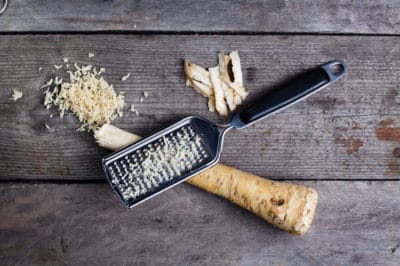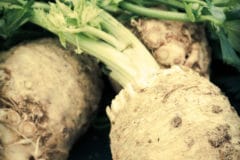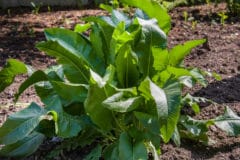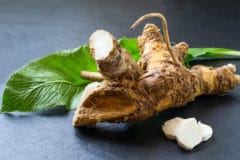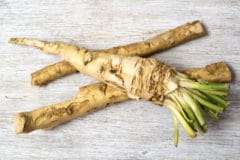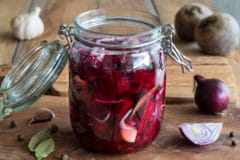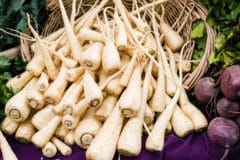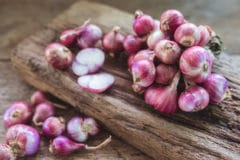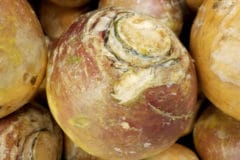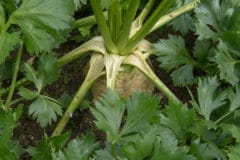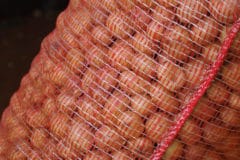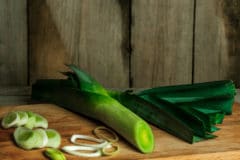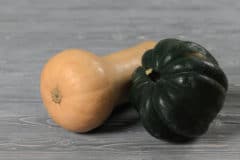Growing for Best Storage
Healthy, well-grown horseradish will store better. Although it tolerates poor soil and part shade, you’ll have bigger roots with fertile, well-drained soil and full sun. Adequate moisture in the growing period means the roots will go into storage with their cells plumped up and be less likely to shrivel. It’s particularly important not to short plants on water in late summer.
Varieties of Horseradish
The horseradish variety you choose doesn’t generally affect storage quality, but may affect taste. Here are some options:
- Maliner Kren – root quality is high, although this variety is slightly more subject to diseases.
- Bohemian Types – these have slightly smaller roots and vary in disease resistance.
- Variegata – the leaves are splashed with white, which makes for an ornamental plant.
- Wasabi – a different species than other varieties, you store and use the rhizome rather than the roots.
How Harvest Affects Storage
It’s best to harvest after frost has killed the tops. Horseradish harvested too early or late may not be well grown or may be harder to get out of the ground because it is so big. When harvesting, try not to cut or break roots, which can encourage mold in storage. Don’t harvest in spring once the plant has started to regrow.
Storing Roots
Roots generally store well in a moist, cold environment such as the refrigerator. A plastic bag with a damp paper towel in the bottom is ideal. They can also be stored in a root cellar if adequate moisture is supplied. It doesn’t matter whether you’re storing them to eat or grow, as these methods work well for both purposes.
Storing Horseradish as a Condiment
Horseradish will be most peppery if grated immediately prior to use. However, you can grate it, add a little salt and a teaspoon or two of vinegar and store in the refrigerator for two weeks. The prepared condiment can also be mixed with mayonnaise or sour cream and stored for two weeks. However, you’ll lose flavor with longer storage.
Garden Storage
Horseradish can be stored right in the garden. Simply dig the roots as you need them. Mulch well in cold climates or the ground may freeze too hard to dig. If you’ve grown your horseradish as an annual, you can dig and trim the roots, then store in pits in the ground, surrounded by damp sawdust.
